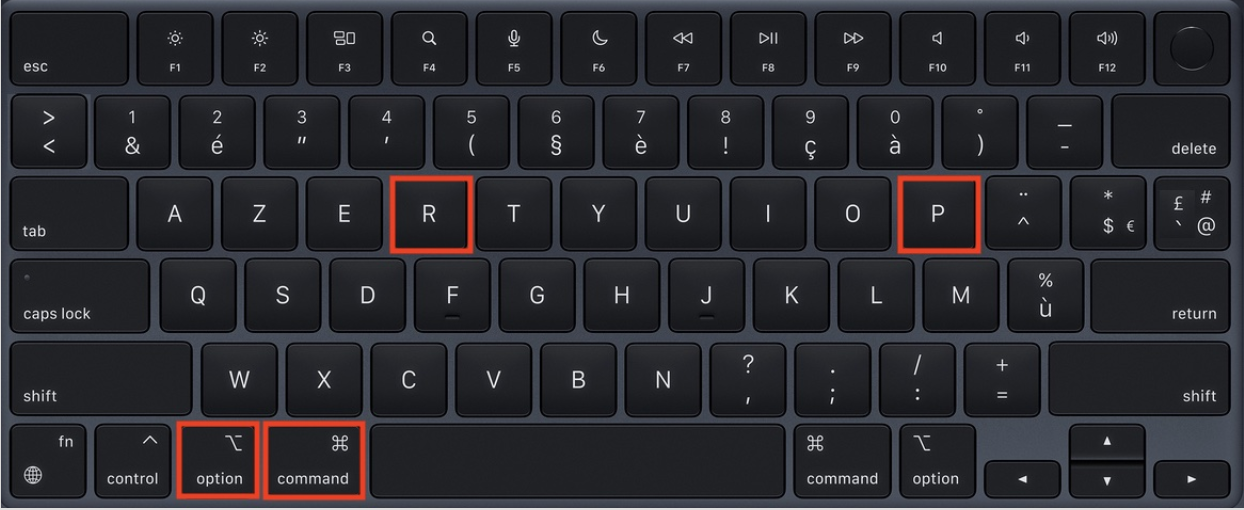My Mac is overheating and/or making loud fan noisesUpdated a month ago
If your Mac is overheating and/or making a lot of noise, you may be able to fix it yourself by trying some of these solutions from our in-house tech experts.
Restart your Mac
The simplest approach is to try restarting your computer.
Step 1. Save any open documents you may be working on.
Step 2. Go to the menu bar, located at the top of the screen, and select the Apple icon.
Step 3. Select “Restart”.
Step 4. If prompted, confirm the restart. Your Mac will close all applications and restart.
Step 5. Log back into your account.
After the restart, check to see if the fan noise has reduced. If the issue continues, try checking your Activity Monitor next.
Check your Activity Monitor to find the root cause
Step 1. Open “Finder”.
Step 2. Select “Applications” in the Finder menu.
Step 3. Find the “Utilities” folder and select “Activity Monitor.app”.
Step 3. Check your Mac’s CPU (Central Processing Unit) usage.
This tells you what applications or other processes are the most energy intensive. To do so, make sure you’re in the “CPU” tab.
Step 4. See if there are any resource-intensive applications/processes that might be slowing your Mac down by checking the “% CPU” column.
Step 5. Quit any unnecessary applications/processes. To do so, select the name of the application/process you want to quit.
Step 6. Select the stop button (an “X” icon) in the top-left corner of the Activity Monitor window. Confirm if prompted.
After this, you can monitor the temperature and fan noise of your Mac. Ideally, quitting resource-intensive programs will allow your Mac to run more smoothly.
Reset your NVRAM
The non-volatile random access memory (NVRAM), sometimes called the parallel random-access machine (PRAM), is a small portion of memory that your computer uses to save and have lightning-speed access to certain settings like sound, startup-disk selection, and even your time zone. Most of the time you can control these settings in your System Settings, but if you can’t, resetting your NVRAM may help.
Let’s get started.
Step 1. Check to see if your Mac has a silicon chip. How to see if your Mac has silicon chip
Please note that if your computer does have a silicon chip, you won’t be able to reset the NVRAM. If that’s the case, you’ll need to try another solution.
Step 2. If your Mac doesn’t have a silicon chip, you’re ready to troubleshoot. To start, shut down your computer.
Step 3. Turn your Mac back on by pressing the power button, and immediately press and hold Option (⌥)-Command (⌘)-P-R. See the picture below if you need help finding the right keys.
Step 4. Wait 20 seconds, then release the keys. As you hold down, you may start to hear the restart sound a few times or see the Apple logo pop up on the screen.
Step 5. When your Mac has restarted, make sure to readjust your system settings, as they could have reset in the process.
If this didn’t work for you, continue troubleshooting using these guidelines from Apple Support

Update your macOS
Doing a software update will install updates for your operating system as well as any built-in apps. Here’s how.
Step 1. Before diving in, back up your Mac to make sure you don’t lose anything along the way. See how to back up your computer via Apple Support
Step 2. Go to the menu bar at the top of your screen and select the Apple icon.
Step 3. Select "System Settings".
Step 4. Select "Software Update" to check for any new software available for your Mac.
Step 5. If there is new software available, select “Update Now” or “Upgrade Now”. You may be prompted to enter your password or restart your computer.
Once the process is done, you can check to see if your issue is fixed.
If "Software Update" doesn’t come up in your System Settings
Step 1. Select the spyglass icon in the menu bar to start a search. Note that the menu bar is located at the top of the screen.
Step 2. Type “Software Update” in the search bar.
Step 3. If the software update option appears, select it. If it doesn’t, go to the App Store and select the “Updates” tab.
Step 4. Start the software update.